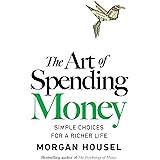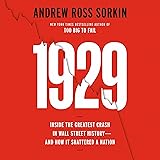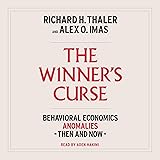Many individuals might wonder, as the interviewer in the accompanying video does, whether investing in high-quality jewelry is truly worthwhile. Leo the Jeweler effectively addresses this skepticism. He postulates that precious metal and gemstone jewelry can indeed be a sound investment. We are encouraged to consider the inherent value. This detailed discussion is presented for the discerning collector and investor.
The notion that luxury items like jewelry are mere expenditures is often challenged. Conversely, understanding the fundamental economics involved is paramount. This exploration delves deeper into the intricacies of why such acquisitions are often strategic. An expert perspective is applied to the market dynamics. Informed decisions become possible for those considering a significant purchase. Therefore, the distinction between expense and asset must be recognized.
The Enduring Intrinsic Value of Precious Metals in Investment Jewelry
Precious metals possess inherent characteristics that underpin their lasting value. Gold, silver, palladium, and rhodium have functioned as currencies for millennia. Their acceptance across cultures is undeniable. Such historical precedence solidifies their role in global commerce. These elements are not merely decorative materials. They are tangible assets, offering a robust store of value. Their utility extends far beyond aesthetics.
Gold, in particular, exhibits several properties making it highly desirable. Its resistance to corrosion ensures durability over time. The malleability allows for intricate craftsmanship. Furthermore, its recyclability contributes to sustainable sourcing. Gold is also exceedingly rare in the Earth’s crust. Most circulating gold has been refined from existing sources. Imagine if a primary resource could disappear; gold’s properties offer a hedge against such concerns. These physical attributes translate directly into economic stability.
Beyond gold, other precious metals hold significant investment potential. Palladium and rhodium, for instance, are critical in industrial applications. Catalytic converters widely utilize these elements. Their demand is driven by global manufacturing. Silver, with its dual role as a precious metal and industrial commodity, offers another avenue. These metals collectively diversify the precious metal portfolio. Their market valuations are influenced by distinct supply and demand dynamics. Therefore, a comprehensive understanding of each metal is beneficial.
Gold as an Inflation Hedge and Wealth Preservation Tool
Gold’s role as a hedge against inflation is widely acknowledged. In times of economic uncertainty, its value often rises. This phenomenon provides a safe haven for capital. Many central banks globally maintain substantial gold reserves. These holdings stabilize national currencies indirectly. Such strategic reserves underscore gold’s financial importance. It acts as a counterbalance to volatile paper assets. The asset’s stability offers peace of mind.
The United States dollar, while not directly backed by gold, participates in a global financial system where gold retains its influence. Other nations, however, do link their currencies to gold in various capacities. This practice lends credibility to their financial systems. A tangible asset provides reassurance in speculative markets. Gold bullion is often considered for pure investment. However, investment-grade gold jewelry also serves this purpose. Both forms offer significant wealth preservation capabilities.
Consider the long-term perspective of gold’s performance. Its purchasing power has largely been maintained over centuries. Conversely, fiat currencies frequently lose value due to inflation. Gold provides a tangible store of wealth. It is unaffected by governmental monetary policies. Investors often allocate a portion of their portfolio to gold. This strategy effectively mitigates risks associated with currency devaluation. Hence, gold is perceived as a steadfast asset.
Unlocking Value: The Role of Investment-Grade Gemstones
Gemstones, briefly mentioned by Leo, constitute another crucial facet of jewelry investment. Not all gemstones are created equal. Their investment potential hinges on several key factors. Rarity, origin, and quality are primary determinants. Certified gemstones, particularly from reputable labs like GIA (Gemological Institute of America), are highly sought after. These certifications provide objective assessments of a stone’s characteristics. Such documentation builds buyer confidence.
The 4Cs – Carat weight, Cut, Color, and Clarity – are fundamental to gemstone valuation. A diamond, for example, with exceptional clarity and a desirable color grade, commands a premium. Imagine if a natural fancy vivid pink diamond, certified and unblemished, were acquired; its appreciation could be significant. Colored gemstones like emeralds, sapphires, and rubies also exhibit considerable value. Their provenance often adds to their desirability. Stones from renowned mines can fetch higher prices. Therefore, the nuances of gemology are critical for investors.
Market demand also significantly influences gemstone values. Fashion trends, cultural preferences, and economic prosperity play a role. Unique, large, and historically significant stones often become collector’s items. Their value can appreciate exponentially. Conversely, lower-quality or mass-produced stones hold less investment appeal. A careful selection process is therefore advised. Investing in high-grade gemstones requires specialized knowledge. Expert guidance from well-versed dealers is invaluable in this domain.
Navigating the Jewelry Market: Considerations for the Savvy Investor
The acquisition and divestment of investment jewelry demand an educated approach. As Leo the Jeweler stresses, honesty from both consumers and dealers is essential. The market for precious metals and gemstones can be complex. Understanding pricing mechanisms is crucial. Retail markups on finished jewelry are often substantial. This fact must be considered when assessing immediate resale value. The intrinsic value of the materials forms the bedrock.
Liquidity is a key consideration for any investment. Investment jewelry might not offer the same rapid liquidity as stocks or bonds. Resale can require more time and effort. Conversely, the tangible nature of the asset provides security. Provenance and documentation significantly impact resale. Original purchase receipts, appraisal certificates, and gemological reports add verifiable value. These documents authenticate the item’s quality and origin. Therefore, meticulous record-keeping is advised for serious collectors.
Factors influencing the resale value of jewelry extend beyond material worth. Brand recognition plays a role. Pieces from prestigious houses often retain more value. The craftsmanship and aesthetic appeal are also important. A unique, well-designed piece can command a premium. Condition is obviously paramount; well-maintained items fare better. Hypothetically, an antique Cartier bracelet with documented history would be highly prized. This combination of factors determines the true market value of investment jewelry.
Beyond Financial Returns: The Emotional and Aesthetic Dividend
While financial acumen is key, the investment in jewelry often transcends purely monetary gains. A unique aspect of jewelry is its dual nature as an investment and a personal adornment. There is an undeniable emotional connection to these pieces. They can become family heirlooms, carrying sentimental value across generations. This emotional dividend is a significant, if unquantifiable, return. It adds depth to the ownership experience.
The aesthetic pleasure derived from wearing or owning beautiful jewelry should not be underestimated. This enjoyment is part of its overall value proposition. Fine jewelry serves as an expression of personal style. It elevates everyday experiences. Such pieces are often admired and treasured. While not a direct financial return, this aspect contributes to enduring desirability. The market for unique designs often reflects this appreciation. Therefore, the joy of ownership is a legitimate consideration.
This blend of intrinsic financial value and emotional appeal distinguishes jewelry from other asset classes. Unlike a stock certificate or a gold bar stored in a vault, jewelry can be enjoyed daily. It offers a constant reminder of its beauty and significance. This unique characteristic can influence market demand. Collectors often seek pieces that resonate personally. This combination of tangibility, beauty, and potential for appreciation makes luxury jewelry a compelling asset. It is a class of its own.
Actionable Steps for the Astute Jewelry Investor
For those considering jewelry as an investment, several practical steps are advised. First, always seek out reputable jewelers, like Leo, who prioritize transparency. Their expertise is invaluable for identifying quality pieces. Second, insist on comprehensive certifications for all precious metals and gemstones. These documents provide objective evidence of value. Third, educate oneself about market trends. Understanding price fluctuations helps optimize purchase and sale timings.
Consider investment jewelry as part of a diversified portfolio. It offers a hedge against traditional market volatility. Due diligence is absolutely crucial. Obtain independent appraisals to confirm value. Maintain meticulous records of provenance and care. Hypothetically, imagine tracking the value appreciation of a signed piece; documentation makes this tangible. Proper insurance should also be secured. This protects against loss or damage.
Focus on investment-grade pieces. These are characterized by superior materials, expert craftsmanship, and verified authenticity. Such items are more likely to retain and appreciate in value. Conversely, mass-produced or lower-quality items rarely offer significant returns. The initial outlay might be higher for investment-grade jewelry. However, its long-term potential for wealth preservation is substantially greater. This discerning approach to jewelry investment can yield considerable financial and personal rewards.











